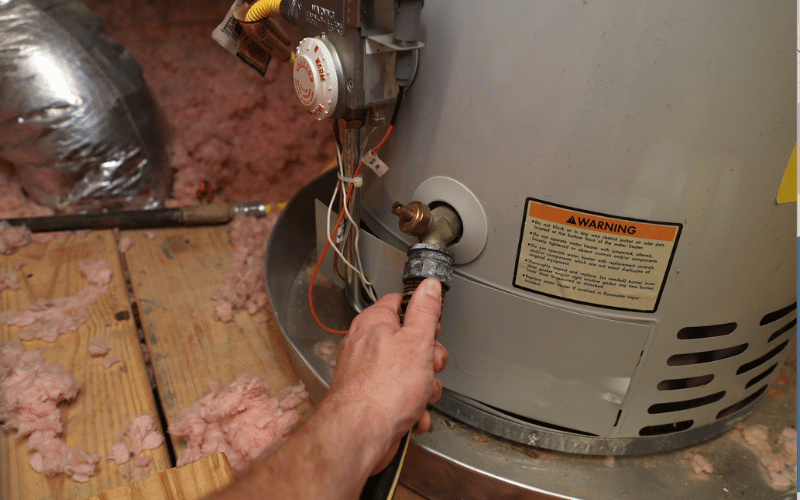Maintaining Your Home's Hot Water System: Essential Guidelines
Maintaining Your Home's Hot Water System: Essential Guidelines
Blog Article
The publisher is making a number of good pointers regarding What Kind of Maintenance Do Water Heaters Need? in general in this post underneath.

Warm water is crucial for everyday comfort, whether it's for a refreshing shower or cleaning meals. To ensure your warm water system runs successfully and lasts much longer, regular upkeep is crucial. This short article provides sensible ideas and insights on how to keep your home's hot water system to stay clear of interruptions and costly fixings.
Intro
Preserving your home's warm water system may seem overwhelming, however with a couple of basic steps, you can guarantee it operates efficiently for many years to come. This overview covers everything from comprehending your hot water system to do it yourself maintenance pointers and understanding when to call in expert help.
Relevance of Preserving Your Warm Water System
Regular upkeep not only prolongs the lifespan of your hot water system but likewise guarantees it operates successfully. Neglecting upkeep can lead to lowered efficiency, higher power bills, and even early failure of the system.
Indications Your Hot Water System Requirements Upkeep
Knowing when your hot water system requires focus can avoid significant problems. Watch out for indicators such as inconsistent water temperature, strange sounds from the heating system, or rusty water.
Comprehending Your Warm Water System
Before diving right into maintenance tasks, it's handy to comprehend the standard components of your hot water system. Normally, this consists of the water heater itself, pipes, anode rods, and temperature level controls.
Monthly Maintenance Tasks
Routine regular monthly checks can aid capture minor problems prior to they rise.
Purging the Hot Water Heater
Flushing your water heater removes sediment build-up, boosting performance and prolonging its life.
Checking and Replacing Anode Rods
Anode rods avoid rust inside the container. Evaluating and changing them when worn out is crucial.
Examining and Changing Temperature Setups
Changing the temperature level settings makes sure ideal performance and security.
DIY Tips for Upkeep
You can do a number of maintenance tasks yourself to keep your warm water system in leading problem.
Checking for Leaks
Frequently examine pipes and connections for leakages, as these can cause water damage and higher bills.
Testing Stress Alleviation Valves
Checking the stress safety valve guarantees it works correctly and prevents excessive stress buildup.
Shielding Pipelines
Protecting hot water pipelines lowers warm loss and can save energy.
When to Call a Professional
While do it yourself upkeep is useful, some issues require specialist know-how.
Facility Problems Requiring Specialist Assistance
Examples consist of major leaks, electrical problems, or if your hot water heater is continually underperforming.
Routine Professional Upkeep Perks
Expert maintenance can consist of complete evaluations, tune-ups, and ensuring conformity with safety criteria.
Verdict
Routine maintenance of your home's warm water system is vital for efficiency, long life, and cost financial savings. By adhering to these ideas and knowing when to look for professional aid, you can guarantee a reliable supply of warm water without unforeseen disturbances.
How to Maintain an Instant Hot Water Heater
Before tinkering with your hot water heater, make sure that it’s not powered on. You also have to turn off the main circuit breaker and shut off the main gas line to prevent accidents. Also turn off the water valves connected to your unit to prevent water from flowing into and out of the appliance. 2. When you’re done, you have to detach the purge valves’ caps. These look like the letter “T†and are situated on either side of the water valves. Doing so will release any pressure that has accumulated inside the valves while at the same time avoid hot water from shooting out and burning your skin. 3. When the purge valves’ caps are removed, you have to connect your hosing lines to the valves. Your unit should have come with three hoses but if it didn’t, you can purchase these things from any hardware or home repair shops. You can also get them from retail stores that sell water heating systems. Read the user’s manual and follow it to complete this task properly. When the hosing lines are connected, open the purge port’s valves. 4. You should never use harsh chemical cleaners or solutions when cleaning your unit. Make use of white vinegar instead. It should be undiluted and you’ll probably use about 2 gallons. 5. Now flush your water heater. This task should probably take about 40 minutes. We can’t give you specific directions for this because the procedure is carried out depending on the type, model and brand of your heater. With that being said, refer to the user’s manual. 6. When you’re done draining the unit, you have to turn off the purge port valves again. Remove the hosing lines that you earlier installed on each of the water valves. Put the valve caps (purge port) back in their respective places and be very careful so as not to damage the rubber discs that are found inside these caps. 7. Now that everything’s back in place, check your user’s manual again to find out how to reactivate your water heating system. 8. Once it is working, turn one of your hot water faucets on just to let air pass through the heater’s water supply pipes. Leave the tap on until water flows smoothly out of it. https://www.orrplumbing.com/blog/2014/september/how-to-maintain-an-instant-hot-water-heater/

Do you like reading up on Water Heater Maintenance Tips You Can't Afford to Forget? Put a review down below. We would be delighted to hear your thinking about this page. In hopes to see you back again later on. So long as you liked our post kindly remember to share it. Thanks so much for your time spent reading it.
See Availability Report this page